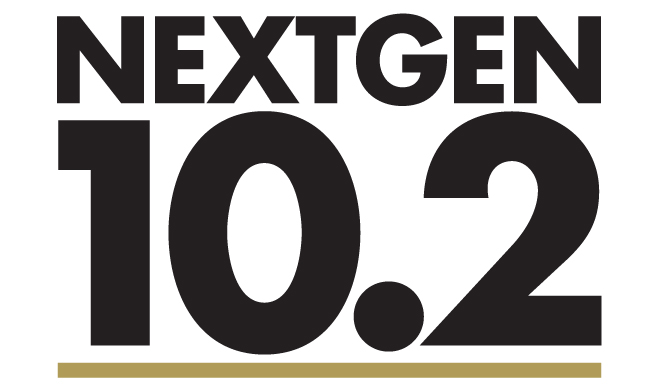This inflection point in U.S. monetary policy is one of the reasons why CIO Americas, Wealth Management (CIO) decided to reduce its tactical overweight in global equities from 3% to 2% (and lift its underweight in U.S. government bonds from -3% to -2%). However, it isn’t the only inflection point that mattered in this decision. The past six or so months have been ideal in many ways for equities and risk assets in general. But these conditions are unlikely to stay quite so favorable, though CIO expects them to remain supportive for stocks.
At the moment, the inflection in monetary policy might be more symbolic than practically relevant, but it does have risks. The Fed officially announced at its September 20 FOMC meeting that it is starting to reduce its balance sheet this October. Since it was widely expected and initially modest in scale, the near-term impact of this balance sheet reduction on interest rates and equity markets should be limited. It’s also hard to argue that policy will become “tight.” But “quantitative tightening” is an unprecedented policy that could entail some hiccups along the way, which may be exacerbated as other central banks also begin to scale back their own stimulus programs.
Meanwhile, the Goldilocks scenario (not too hot, not too cold) for growth and inflation that has played out over the past six or so months is likely to change, especially regarding inflation. Over that time consensus forecasts for global GDP growth in 2017 and 2018 have been revised higher, while analyst estimates for S&P 500 earnings also went through a lengthy stretch of positive revisions. In contrast, actual and expected inflation in the U.S. fell, which eased pressure on the Fed to tighten more aggressively.
[To read more of Larry M. Schnaid’s thought leadership click here]
Now inflation trends seem to be reversing and the most recent inflation reading was a bit stronger than expected. As slack in the economy continues to diminish, especially in the labor markets, and as oil prices begin to grind higher, inflationary pressures are likely to gain a bit more traction. As a result, CIO forecasts core inflation to reach 2.2% by the end of next year, up from the most recent reading of 1.7%. Inflation could get a further boost if growth accelerates next year—a distinct possibility if tax reform succeeds. The UBS U.S. Office of Public Policy believes there is a slightly better than 50% chance that tax reform is enacted by early 2018.
These monetary policy and inflation inflections take some sheen off the prevailing Goldilocks scenario. Consequently, CIO thinks a reduction in its global equity allocation is warranted. However, it’s only a 1% reduction because CIO doesn’t expect an aggressive increase in inflation nor does it believe the economic expansion is at risk.
While CIO is scaling back some of its risk exposure at the asset class level, CIO still finds compelling opportunities within U.S. equities. In particular, CIO retains its preference for value over growth stocks, which it introduced in May. The underperformance of value stocks this year is quite striking. As of the end of September, the large-cap Russell 1000 Growth Index has generated a total return of 20% whereas the Russell 1000 Value Index is only up 7%.
A divergence of this magnitude between growth and value is somewhat unusual. In fact, based on performance over the prior year—when value underperforms to this extent, it tends to rebound. Partly due to this underperformance, value stocks are looking quite cheap relative to growth stocks. The forward P/E for the Russell 1000 Value Index is now at its lowest level in over ten years relative to the Russell 1000 Growth Index.
The softening of inflation earlier in the year has likely been one of the drivers of value’s underperformance. Value stocks tend to be more economically sensitive than growth stocks and somewhat correlated to inflation developments. This makes sense especially considering that financials and energy comprise over 35% of the Russell Value Index. Financials benefit from higher inflation through higher interest rates while energy stocks tend to benefit from higher oil prices, a key driver of inflation. Thus, the potential budding reversal in inflation is good news for value stocks.
The prospect of corporate tax reform should also boost value stocks. They would benefit from any pickup in economic growth stemming from changes in the tax code. And financials in particular could be key winners due to the sector’s heavy domestic exposure compared to other industries. Overall, CIO believes that a reasonable tax reform package could boost S&P 500 earnings growth to 15% in 2018. Even without tax reform, growth should remain at a healthy level of 8%.
So while CIO is modestly reducing its bets at the asset class level, it still sees attractive opportunities as central bank policies and inflation start to inflect.
[For more on UBS’ approach to Wealth Management click here]
This article has been provided by Larry Schnaid, CFP®, CPWA®, Senior Portfolio Manager at UBS Financial Services, Inc.
As a firm providing wealth management services to clients, UBS Financial Services Inc. offers both investment advisory services and brokerage services. Investment advisory services and brokerage services are separate and distinct, differ in material ways and are governed by different laws and separate arrangements. It is important that clients understand the ways in which we conduct business and that they carefully read the agreements and disclosures that we provide to them about the products or services we offer. For more information visit our website at ubs.com/workingwithus. CPWA® is a service mark of the Investment Management Consultants Association, Inc. in the United States of America and worldwide. Certified Financial Planner Board of Standards Inc. owns the certification marks CFP® and CERTIFIED FINANCIAL PLANNER™ in the U.S.
©UBS 2017. The key symbol and UBS are among the registered and unregistered trademarks of UBS. All rights reserved. UBS Financial Services Incorporated of Puerto Rico is a subsidiary of UBS Financial Services Inc. UBS Financial Services Inc. is a subsidiary of UBS AG. Member FINRA/SIPC.













































